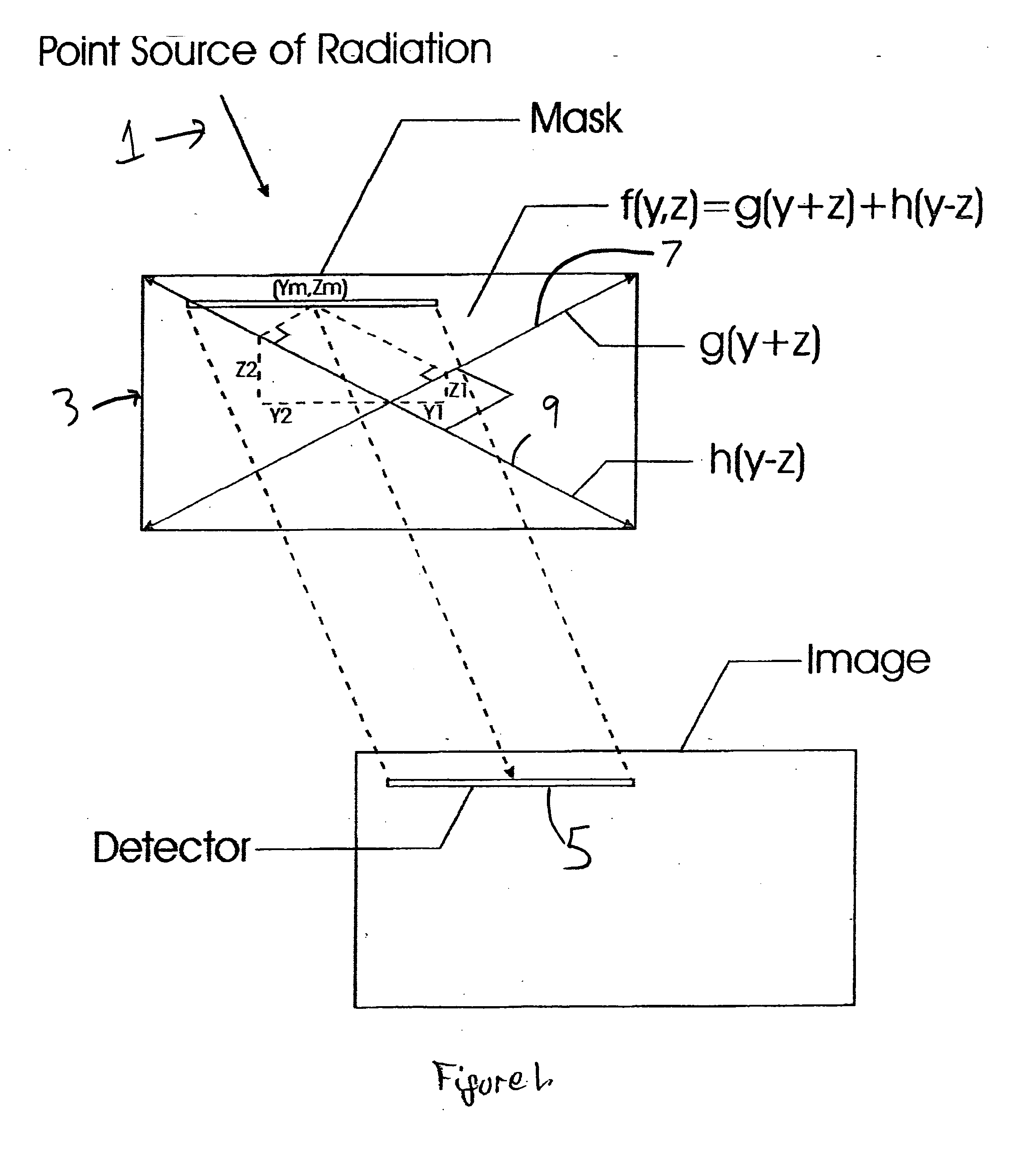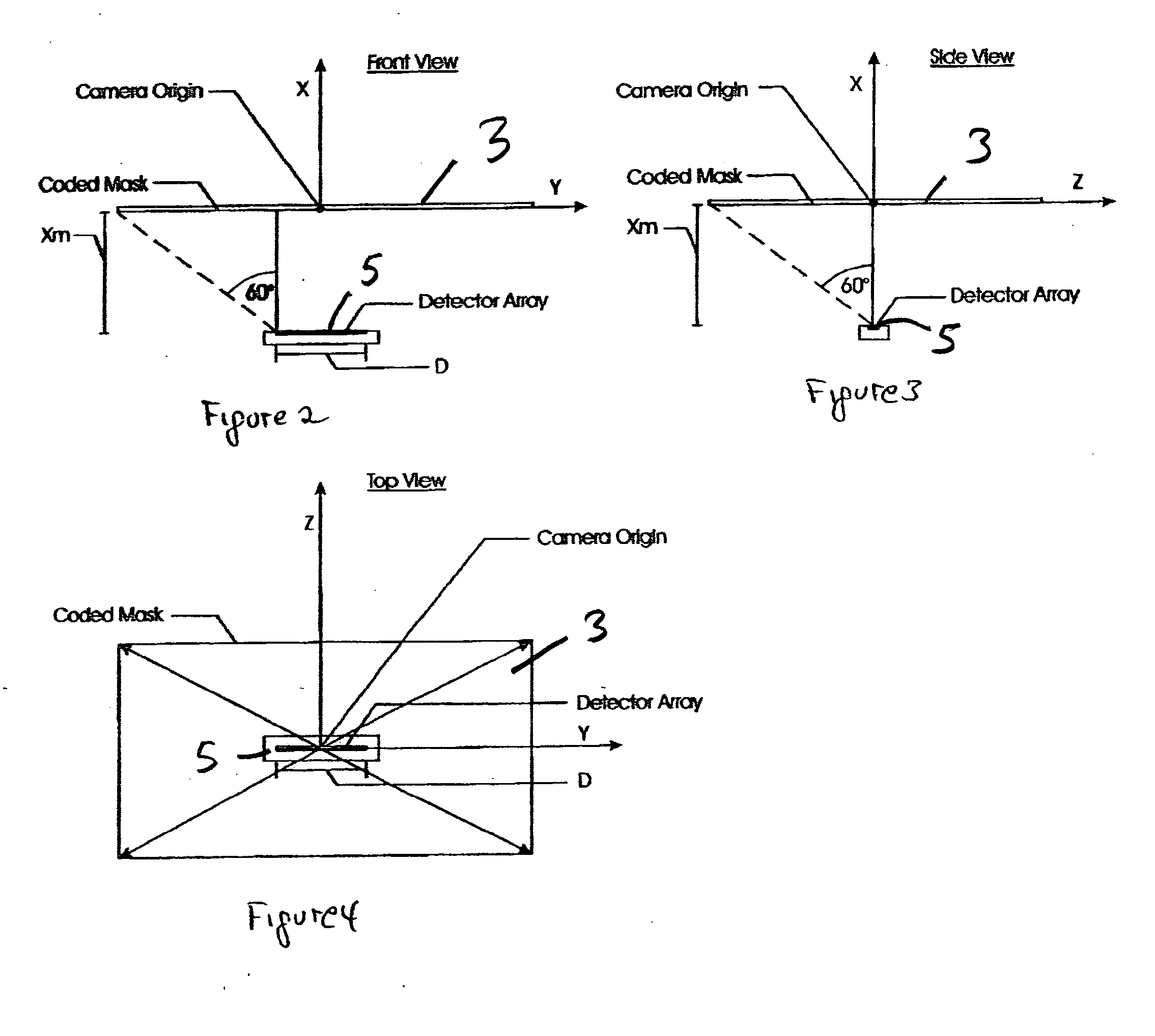Sensor for determining the angular position of a radiating point source in two dimensions and method of operation
a technology of a point source and a sensor, which is applied in the direction of navigation instruments, instruments for comonautical navigation, instruments, etc., can solve the problems of not providing immunity from errors and not yielding sufficient resolution
- Summary
- Abstract
- Description
- Claims
- Application Information
AI Technical Summary
Benefits of technology
Problems solved by technology
Method used
Image
Examples
first embodiment
[0024] Reference is first made to FIG. 1 which shows a schematic representation of the present invention. In FIG. 1, a point source of radiation 1 is directed toward a mask 3. The radiation travels through the mask 3 and, as modified by the mask 3, is received by the detector 5.
[0025] With further reference to FIG. 1, the mask 3 has a pattern thereon which is created by a first set of frequencies along the double-headed arrow 7 and a second set of frequencies along the double-headed arrow 9.
[0026]FIGS. 2, 3 and 4 show front, side and top views, respectively, of the system illustrated in FIG. 1. FIGS. 5, 6 and 7 provide a better understanding of the frequency sequences shown at the reference numerals 7 and 9. Each of the frequency sequences consist of at least two low fixed frequencies followed by at least two variable frequencies followed by at least two fixed high frequencies.
[0027] The detector 5 may, if desired, consist of a linear CCD detector with the mask 3 situated at a pre...
second embodiment
[0039] the present invention is schematically illustrated in FIG. 10. In FIG. 10, the system 10 is seen to include a point source of radiation 11, a mask 3, and a detector 5. The mask 3 has a pattern thereon including fixed low frequency, variable frequency, and fixed high frequency components oriented along the X axis and referred to in FIG. 10 by the function h(y). The mask 3 also has another pattern component oriented along the line Y=Z and referred to by the function g(y+z) which line is designated by the reference numeral 16 and is seen to extend diagonally across the mask 3. That component has fixed low and high frequency components. Additionally, a variable frequency component extends along the Z axis and is designated by the reference numeral 18 as well as by the function j(y,z). That component comprises a variable frequency component.
[0040] For this embodiment, the mask transmissivity function is:
Mask(y,z)=g(y+z)+h(y)+j(y,z) (22)
Replacing g(y+z), h(y), and j(y,z) by th...
PUM
 Login to View More
Login to View More Abstract
Description
Claims
Application Information
 Login to View More
Login to View More - R&D
- Intellectual Property
- Life Sciences
- Materials
- Tech Scout
- Unparalleled Data Quality
- Higher Quality Content
- 60% Fewer Hallucinations
Browse by: Latest US Patents, China's latest patents, Technical Efficacy Thesaurus, Application Domain, Technology Topic, Popular Technical Reports.
© 2025 PatSnap. All rights reserved.Legal|Privacy policy|Modern Slavery Act Transparency Statement|Sitemap|About US| Contact US: help@patsnap.com



